Pete Walsh
2 OLMo 2 Furious
Dec 31, 2024
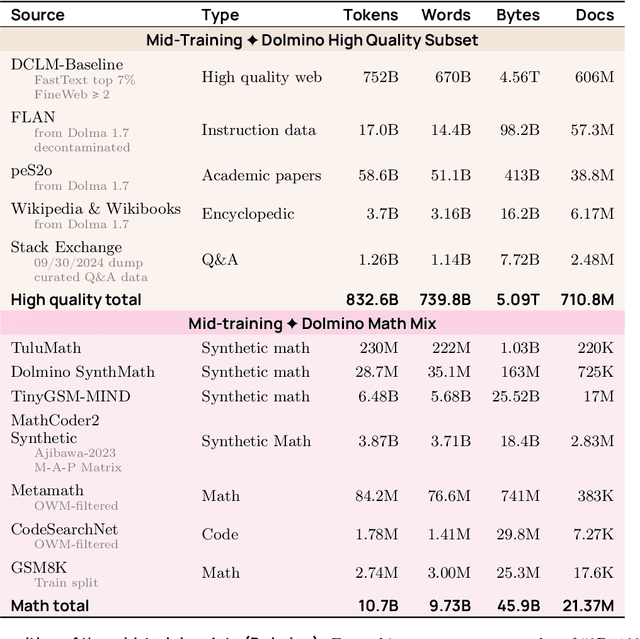
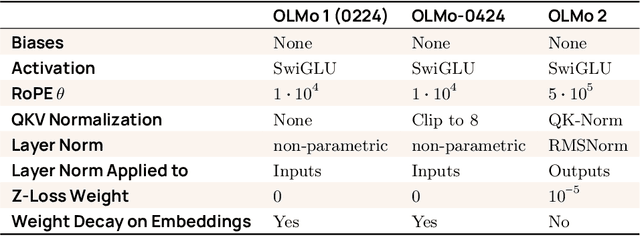

Abstract:We present OLMo 2, the next generation of our fully open language models. OLMo 2 includes dense autoregressive models with improved architecture and training recipe, pretraining data mixtures, and instruction tuning recipes. Our modified model architecture and training recipe achieve both better training stability and improved per-token efficiency. Our updated pretraining data mixture introduces a new, specialized data mix called Dolmino Mix 1124, which significantly improves model capabilities across many downstream task benchmarks when introduced via late-stage curriculum training (i.e. specialized data during the annealing phase of pretraining). Finally, we incorporate best practices from T\"ulu 3 to develop OLMo 2-Instruct, focusing on permissive data and extending our final-stage reinforcement learning with verifiable rewards (RLVR). Our OLMo 2 base models sit at the Pareto frontier of performance to compute, often matching or outperforming open-weight only models like Llama 3.1 and Qwen 2.5 while using fewer FLOPs and with fully transparent training data, code, and recipe. Our fully open OLMo 2-Instruct models are competitive with or surpassing open-weight only models of comparable size, including Qwen 2.5, Llama 3.1 and Gemma 2. We release all OLMo 2 artifacts openly -- models at 7B and 13B scales, both pretrained and post-trained, including their full training data, training code and recipes, training logs and thousands of intermediate checkpoints. The final instruction model is available on the Ai2 Playground as a free research demo.
Molmo and PixMo: Open Weights and Open Data for State-of-the-Art Multimodal Models
Sep 25, 2024



Abstract:Today's most advanced multimodal models remain proprietary. The strongest open-weight models rely heavily on synthetic data from proprietary VLMs to achieve good performance, effectively distilling these closed models into open ones. As a result, the community is still missing foundational knowledge about how to build performant VLMs from scratch. We present Molmo, a new family of VLMs that are state-of-the-art in their class of openness. Our key innovation is a novel, highly detailed image caption dataset collected entirely from human annotators using speech-based descriptions. To enable a wide array of user interactions, we also introduce a diverse dataset mixture for fine-tuning that includes in-the-wild Q&A and innovative 2D pointing data. The success of our approach relies on careful choices for the model architecture details, a well-tuned training pipeline, and, most critically, the quality of our newly collected datasets, all of which will be released. The best-in-class 72B model within the Molmo family not only outperforms others in the class of open weight and data models but also compares favorably against proprietary systems like GPT-4o, Claude 3.5, and Gemini 1.5 on both academic benchmarks and human evaluation. We will be releasing all of our model weights, captioning and fine-tuning data, and source code in the near future. Select model weights, inference code, and demo are available at https://molmo.allenai.org.
OLMoE: Open Mixture-of-Experts Language Models
Sep 03, 2024



Abstract:We introduce OLMoE, a fully open, state-of-the-art language model leveraging sparse Mixture-of-Experts (MoE). OLMoE-1B-7B has 7 billion (B) parameters but uses only 1B per input token. We pretrain it on 5 trillion tokens and further adapt it to create OLMoE-1B-7B-Instruct. Our models outperform all available models with similar active parameters, even surpassing larger ones like Llama2-13B-Chat and DeepSeekMoE-16B. We present various experiments on MoE training, analyze routing in our model showing high specialization, and open-source all aspects of our work: model weights, training data, code, and logs.
OLMo: Accelerating the Science of Language Models
Feb 07, 2024
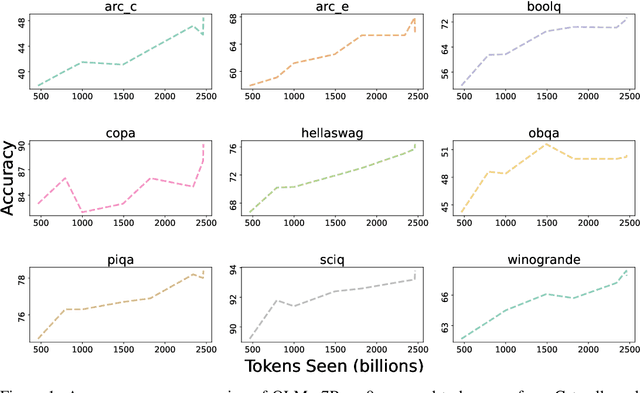
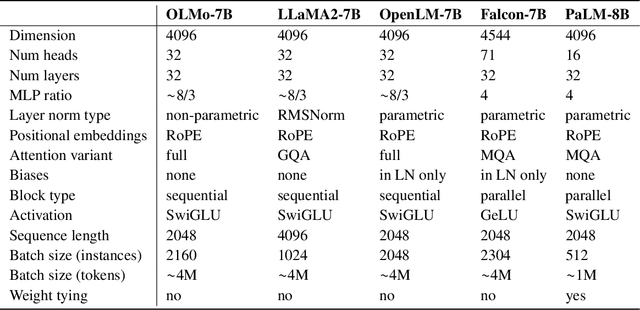
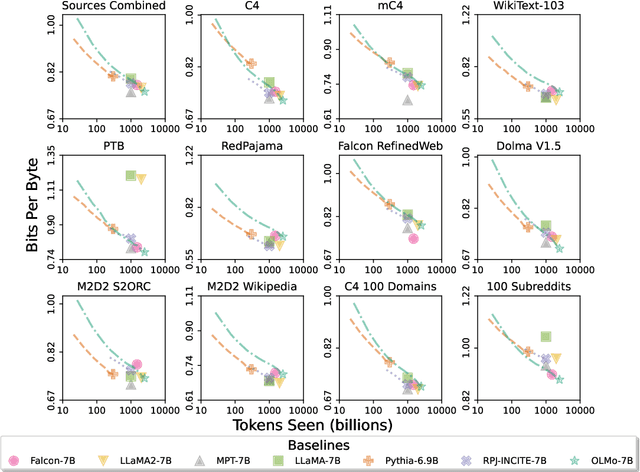
Abstract:Language models (LMs) have become ubiquitous in both NLP research and in commercial product offerings. As their commercial importance has surged, the most powerful models have become closed off, gated behind proprietary interfaces, with important details of their training data, architectures, and development undisclosed. Given the importance of these details in scientifically studying these models, including their biases and potential risks, we believe it is essential for the research community to have access to powerful, truly open LMs. To this end, this technical report details the first release of OLMo, a state-of-the-art, truly Open Language Model and its framework to build and study the science of language modeling. Unlike most prior efforts that have only released model weights and inference code, we release OLMo and the whole framework, including training data and training and evaluation code. We hope this release will empower and strengthen the open research community and inspire a new wave of innovation.
Dolma: an Open Corpus of Three Trillion Tokens for Language Model Pretraining Research
Jan 31, 2024



Abstract:Language models have become a critical technology to tackling a wide range of natural language processing tasks, yet many details about how the best-performing language models were developed are not reported. In particular, information about their pretraining corpora is seldom discussed: commercial language models rarely provide any information about their data; even open models rarely release datasets they are trained on, or an exact recipe to reproduce them. As a result, it is challenging to conduct certain threads of language modeling research, such as understanding how training data impacts model capabilities and shapes their limitations. To facilitate open research on language model pretraining, we release Dolma, a three trillion tokens English corpus, built from a diverse mixture of web content, scientific papers, code, public-domain books, social media, and encyclopedic materials. In addition, we open source our data curation toolkit to enable further experimentation and reproduction of our work. In this report, we document Dolma, including its design principles, details about its construction, and a summary of its contents. We interleave this report with analyses and experimental results from training language models on intermediate states of Dolma to share what we have learned about important data curation practices, including the role of content or quality filters, deduplication, and multi-source mixing. Dolma has been used to train OLMo, a state-of-the-art, open language model and framework designed to build and study the science of language modeling.
Catwalk: A Unified Language Model Evaluation Framework for Many Datasets
Dec 15, 2023Abstract:The success of large language models has shifted the evaluation paradigms in natural language processing (NLP). The community's interest has drifted towards comparing NLP models across many tasks, domains, and datasets, often at an extreme scale. This imposes new engineering challenges: efforts in constructing datasets and models have been fragmented, and their formats and interfaces are incompatible. As a result, it often takes extensive (re)implementation efforts to make fair and controlled comparisons at scale. Catwalk aims to address these issues. Catwalk provides a unified interface to a broad range of existing NLP datasets and models, ranging from both canonical supervised training and fine-tuning, to more modern paradigms like in-context learning. Its carefully-designed abstractions allow for easy extensions to many others. Catwalk substantially lowers the barriers to conducting controlled experiments at scale. For example, we finetuned and evaluated over 64 models on over 86 datasets with a single command, without writing any code. Maintained by the AllenNLP team at the Allen Institute for Artificial Intelligence (AI2), Catwalk is an ongoing open-source effort: https://github.com/allenai/catwalk.
What's In My Big Data?
Oct 31, 2023
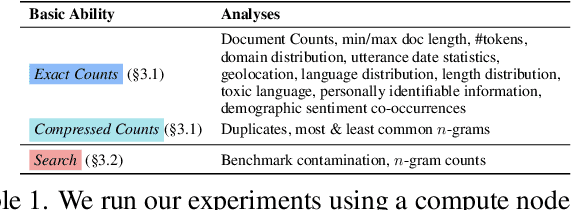


Abstract:Large text corpora are the backbone of language models. However, we have a limited understanding of the content of these corpora, including general statistics, quality, social factors, and inclusion of evaluation data (contamination). In this work, we propose What's In My Big Data? (WIMBD), a platform and a set of sixteen analyses that allow us to reveal and compare the contents of large text corpora. WIMBD builds on two basic capabilities -- count and search -- at scale, which allows us to analyze more than 35 terabytes on a standard compute node. We apply WIMBD to ten different corpora used to train popular language models, including C4, The Pile, and RedPajama. Our analysis uncovers several surprising and previously undocumented findings about these corpora, including the high prevalence of duplicate, synthetic, and low-quality content, personally identifiable information, toxic language, and benchmark contamination. For instance, we find that about 50% of the documents in RedPajama and LAION-2B-en are duplicates. In addition, several datasets used for benchmarking models trained on such corpora are contaminated with respect to important benchmarks, including the Winograd Schema Challenge and parts of GLUE and SuperGLUE. We open-source WIMBD's code and artifacts to provide a standard set of evaluations for new text-based corpora and to encourage more analyses and transparency around them: github.com/allenai/wimbd.
Continued Pretraining for Better Zero- and Few-Shot Promptability
Oct 19, 2022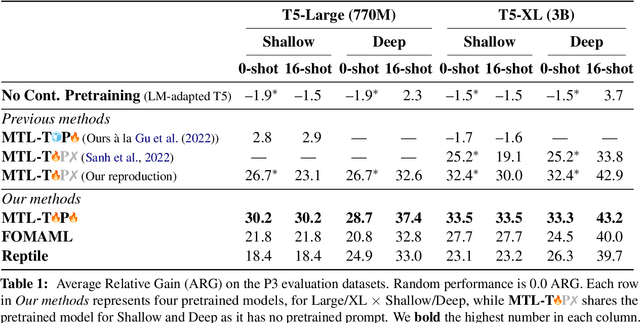
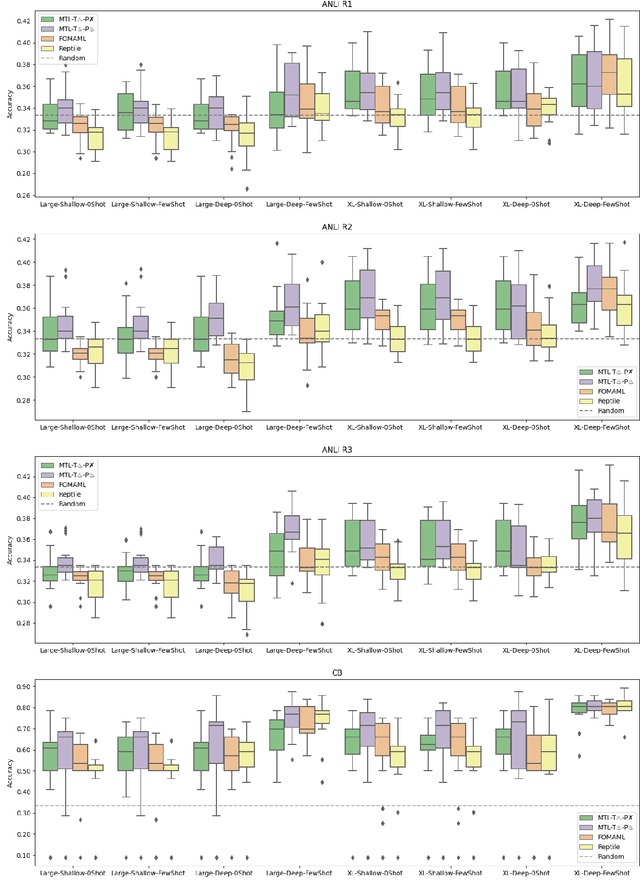
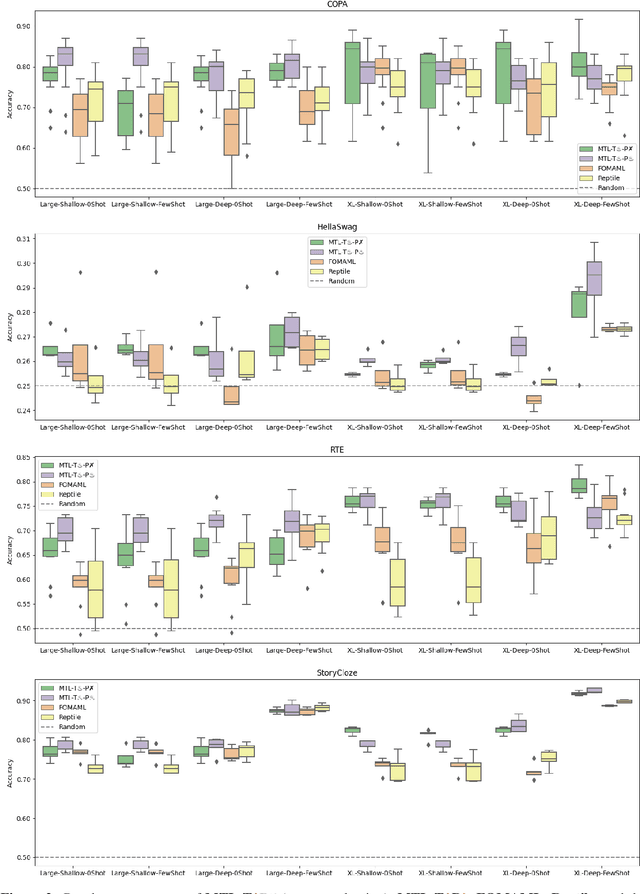
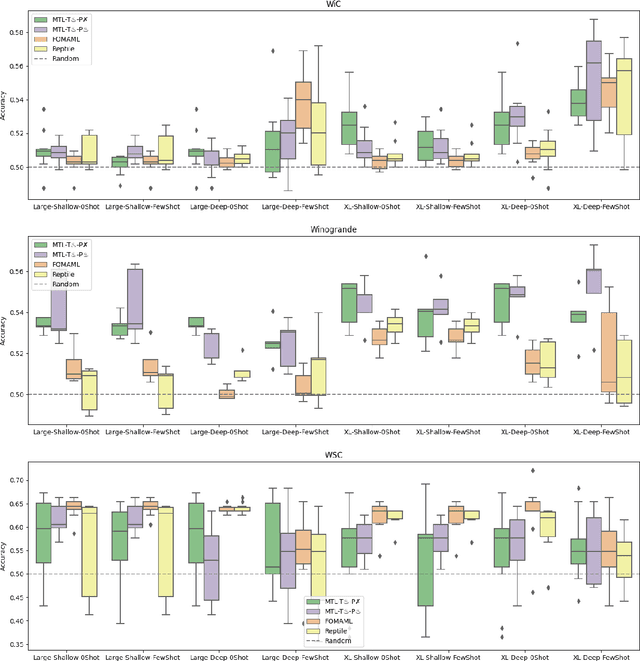
Abstract:Recently introduced language model prompting methods can achieve high accuracy in zero- and few-shot settings while requiring few to no learned task-specific parameters. Nevertheless, these methods still often trail behind full model finetuning. In this work, we investigate if a dedicated continued pretraining stage could improve "promptability", i.e., zero-shot performance with natural language prompts or few-shot performance with prompt tuning. We reveal settings where existing continued pretraining methods lack promptability. We also identify current methodological gaps, which we fill with thorough large-scale experiments. We demonstrate that a simple recipe, continued pretraining that incorporates a trainable prompt during multi-task learning, leads to improved promptability in both zero- and few-shot settings compared to existing methods, up to 31% relative. On the other hand, we find that continued pretraining using MAML-style meta-learning, a method that directly optimizes few-shot promptability, yields subpar performance. We validate our findings with two prompt tuning methods, and, based on our results, we provide concrete recommendations to optimize promptability for different use cases.
Staged Training for Transformer Language Models
Mar 11, 2022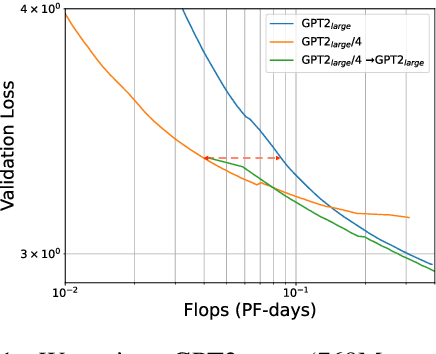
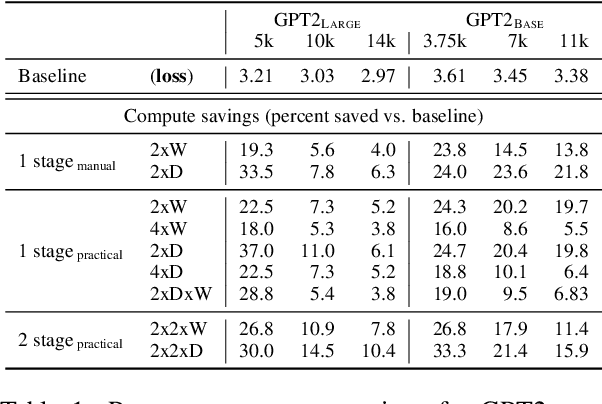
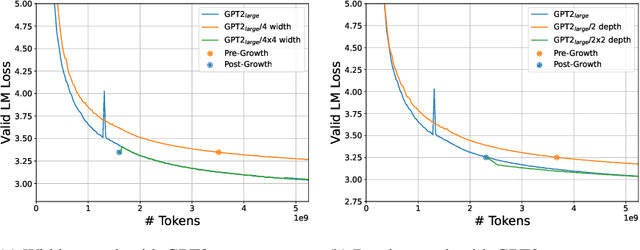
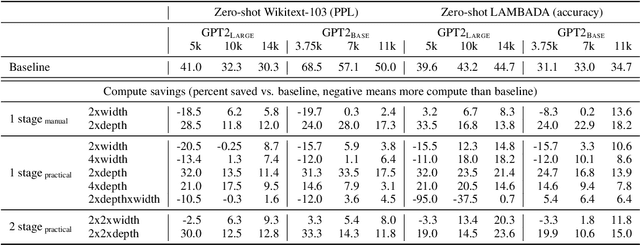
Abstract:The current standard approach to scaling transformer language models trains each model size from a different random initialization. As an alternative, we consider a staged training setup that begins with a small model and incrementally increases the amount of compute used for training by applying a "growth operator" to increase the model depth and width. By initializing each stage with the output of the previous one, the training process effectively re-uses the compute from prior stages and becomes more efficient. Our growth operators each take as input the entire training state (including model parameters, optimizer state, learning rate schedule, etc.) and output a new training state from which training continues. We identify two important properties of these growth operators, namely that they preserve both the loss and the "training dynamics" after applying the operator. While the loss-preserving property has been discussed previously, to the best of our knowledge this work is the first to identify the importance of preserving the training dynamics (the rate of decrease of the loss during training). To find the optimal schedule for stages, we use the scaling laws from (Kaplan et al., 2020) to find a precise schedule that gives the most compute saving by starting a new stage when training efficiency starts decreasing. We empirically validate our growth operators and staged training for autoregressive language models, showing up to 22% compute savings compared to a strong baseline trained from scratch. Our code is available at https://github.com/allenai/staged-training.
 Add to Chrome
Add to Chrome Add to Firefox
Add to Firefox Add to Edge
Add to Edge